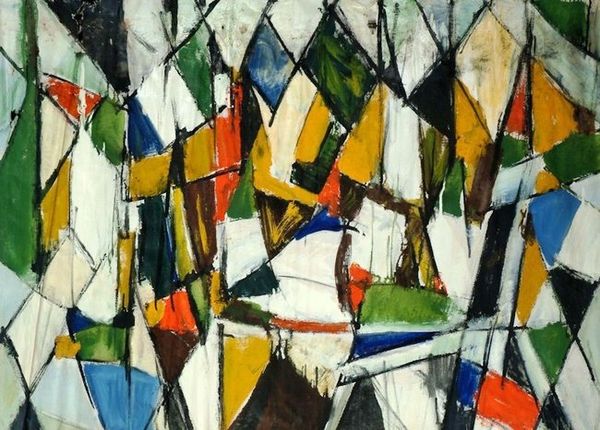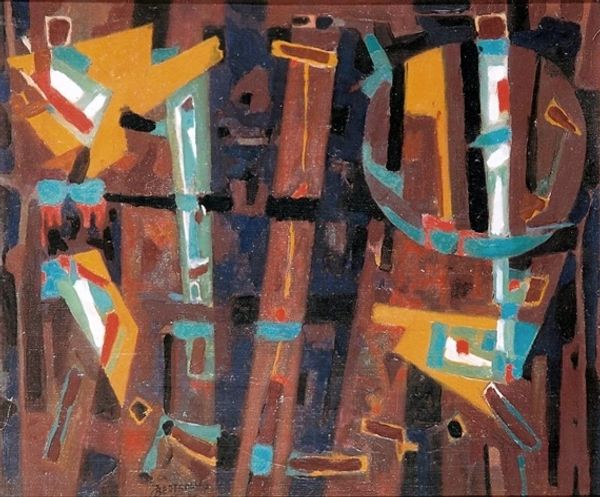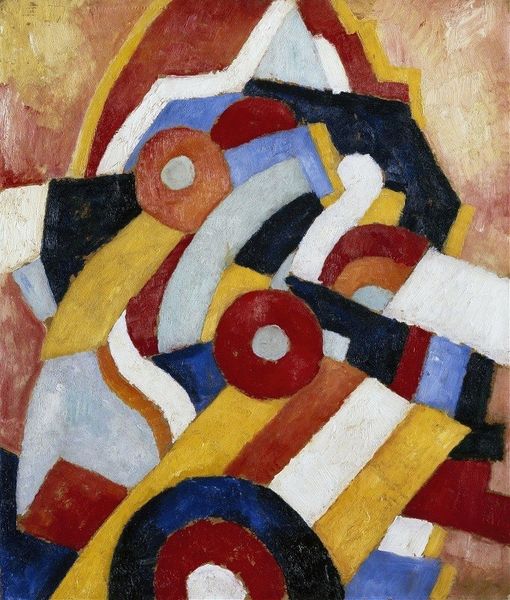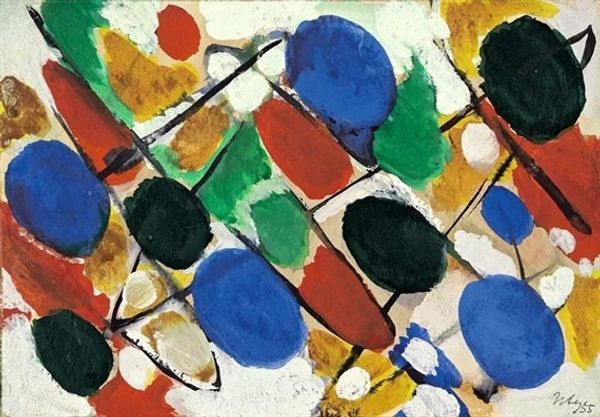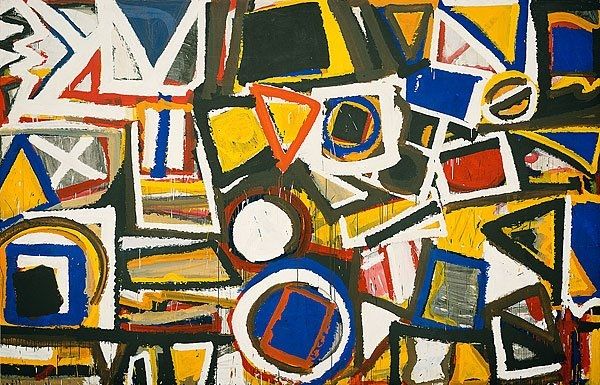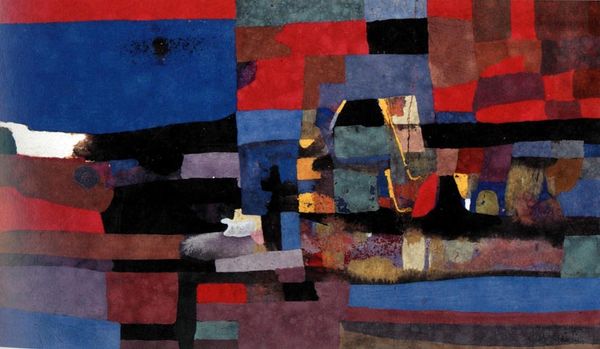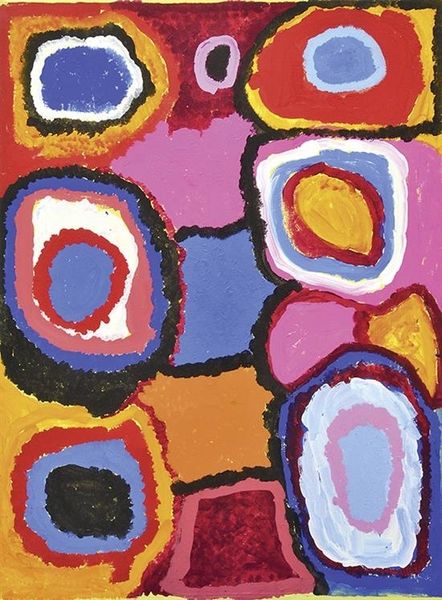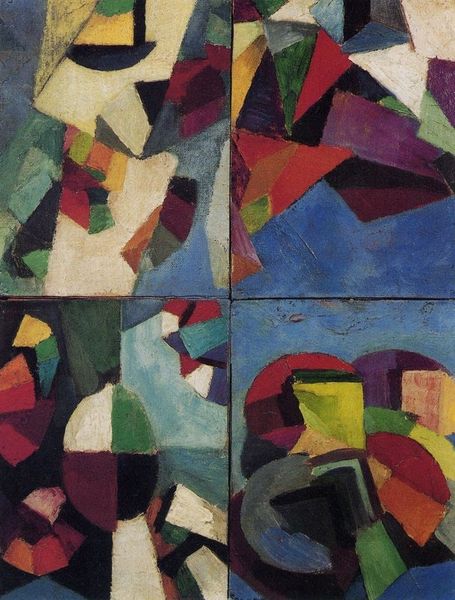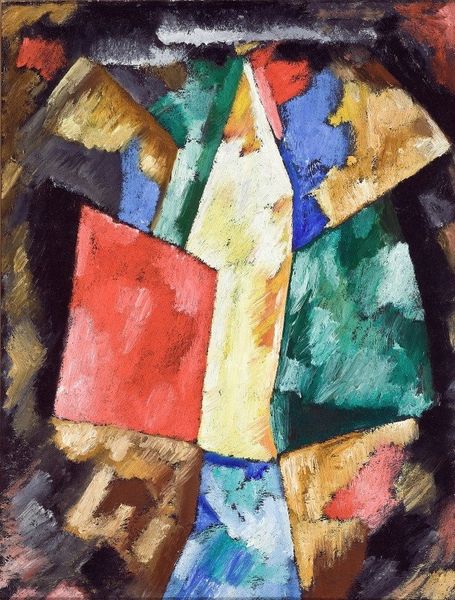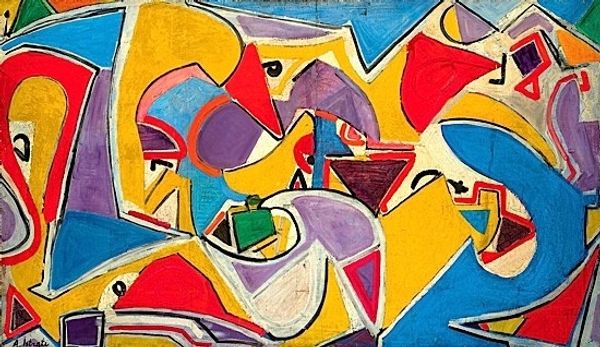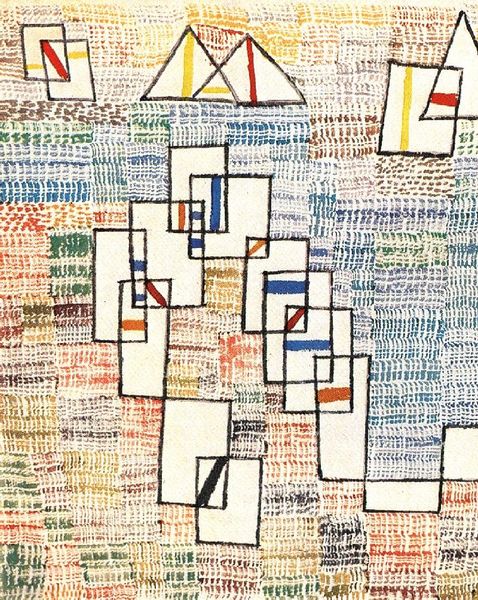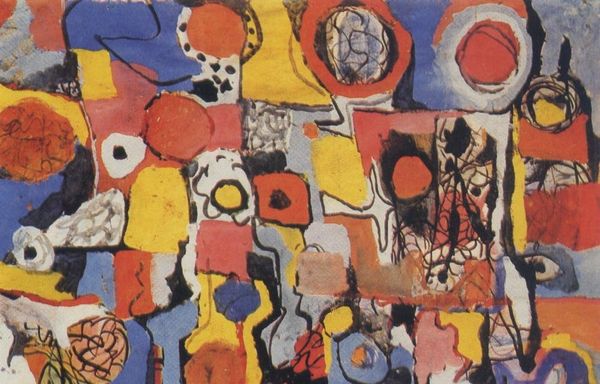
Copyright: Jean Rene Bazaine,Fair Use
Curator: Upon viewing this artwork, I immediately sense an electric sort of anxiety, or maybe suppressed chaos, bubbling beneath its colorful facade. What's your first take on this piece? Editor: This intriguing mixed-media work is entitled "Figure et Paysage," or "Figure and Landscape." It was completed in 1949 by the French artist Jean Rene Bazaine, at a period when post-war art was being born. Curator: So it's got a historical burden. Those jolting colors—red, blue, and sharp yellows—almost scream against one another within the composition. And these solid dark outlines compartmentalize what could have been fluidity. The title proposes a duality but my eye perceives inner conflict more than serenity. Editor: Precisely! Bazaine sought to capture something deeper than surface-level representation. Many critics align his work with Abstract Expressionism, but also Fauvism for its vibrant palettes, especially considering he aimed for emotional experience in response to nature. Do the formal aspects relate to this aim? Curator: Absolutely, that Fauvist echo sings out clearly here. It feels like the emotional response *is* the subject, and that recognizable imagery plays only a subservient role to communicate a feeling of imbalance or even searching for something that feels solid. But as Abstract Expressionism does, too, I mean what kind of inner space are we talking about? Postwar trauma? Is that visible? Editor: His interest in stained glass might also hold significance. He uses these rigid dividing lines to define these color segments, it seems he suggests some narrative through them, much like windows tell a story. What underlying themes might that imply? Curator: Maybe that he’s seeing his artistic subjects not directly but as the results of refraction, whether that’s through the literal architecture or other social constructions. It presents a multifaceted world rather than one solid story. And this feels like it would make sense for an art of the era too. What do you make of Bazaine now? Editor: It's made me appreciate how he was clearly an artistic bellwether for an artistic epoch trying to make sense of disruption. In this one painting there is abstraction, emotional revelation, even hints of social theory if you lean in close enough. What a complex moment this encapsulates! Curator: Yes, "Figure et Paysage" functions as a powerful emblem that transcends basic landscape—it visually translates the quest for internal and external harmony, during what was a historical crossroads. It's no small feat to weave it together as beautifully as he did here.
Comments
No comments
Be the first to comment and join the conversation on the ultimate creative platform.
